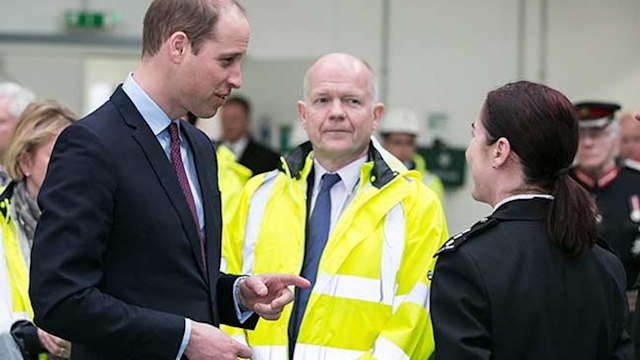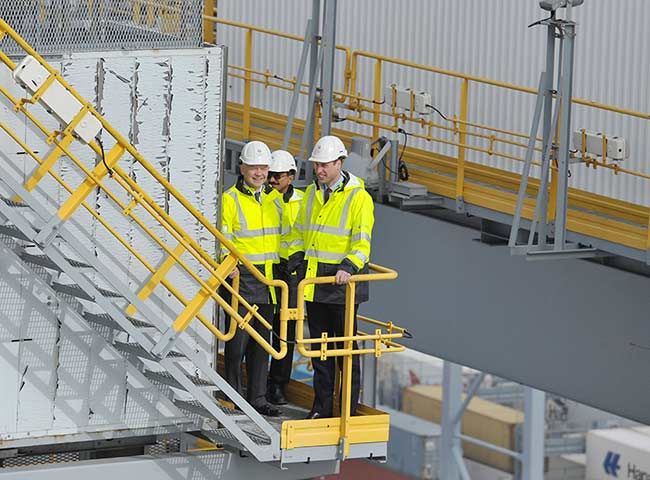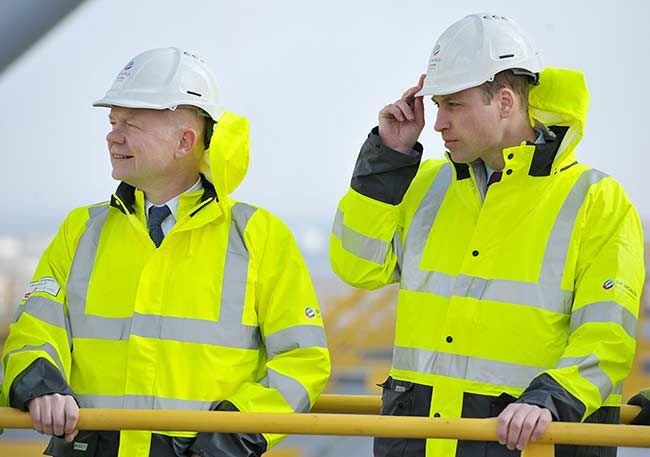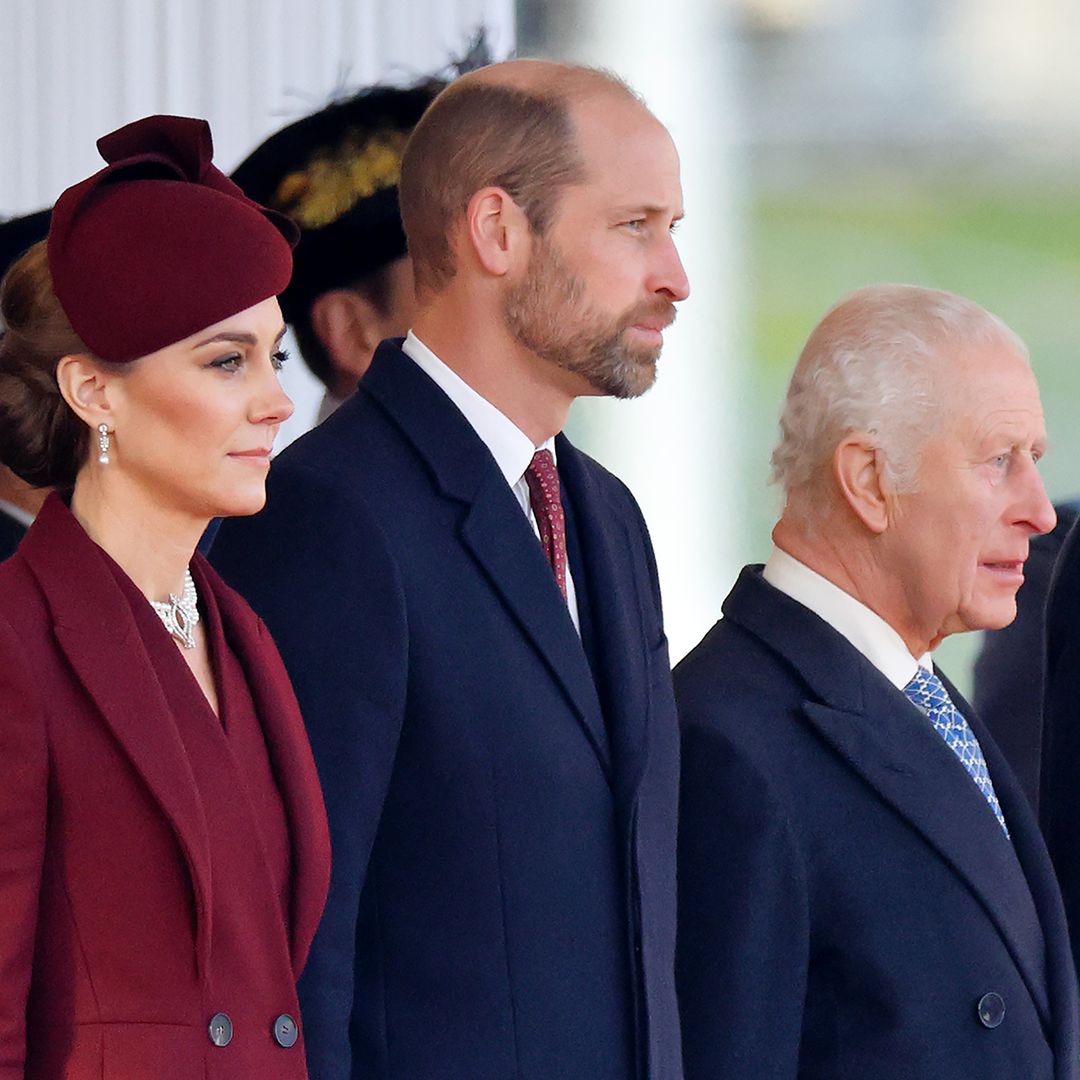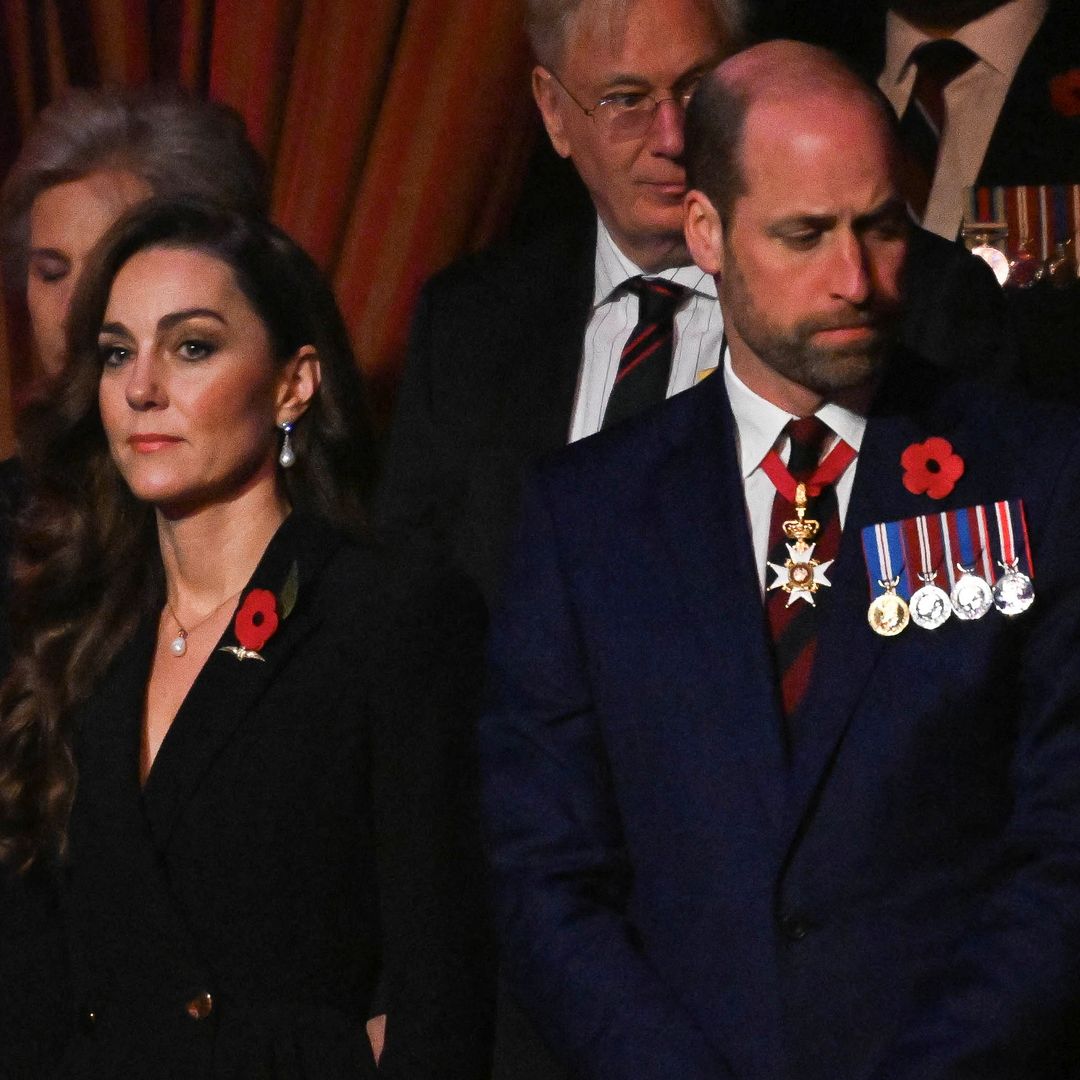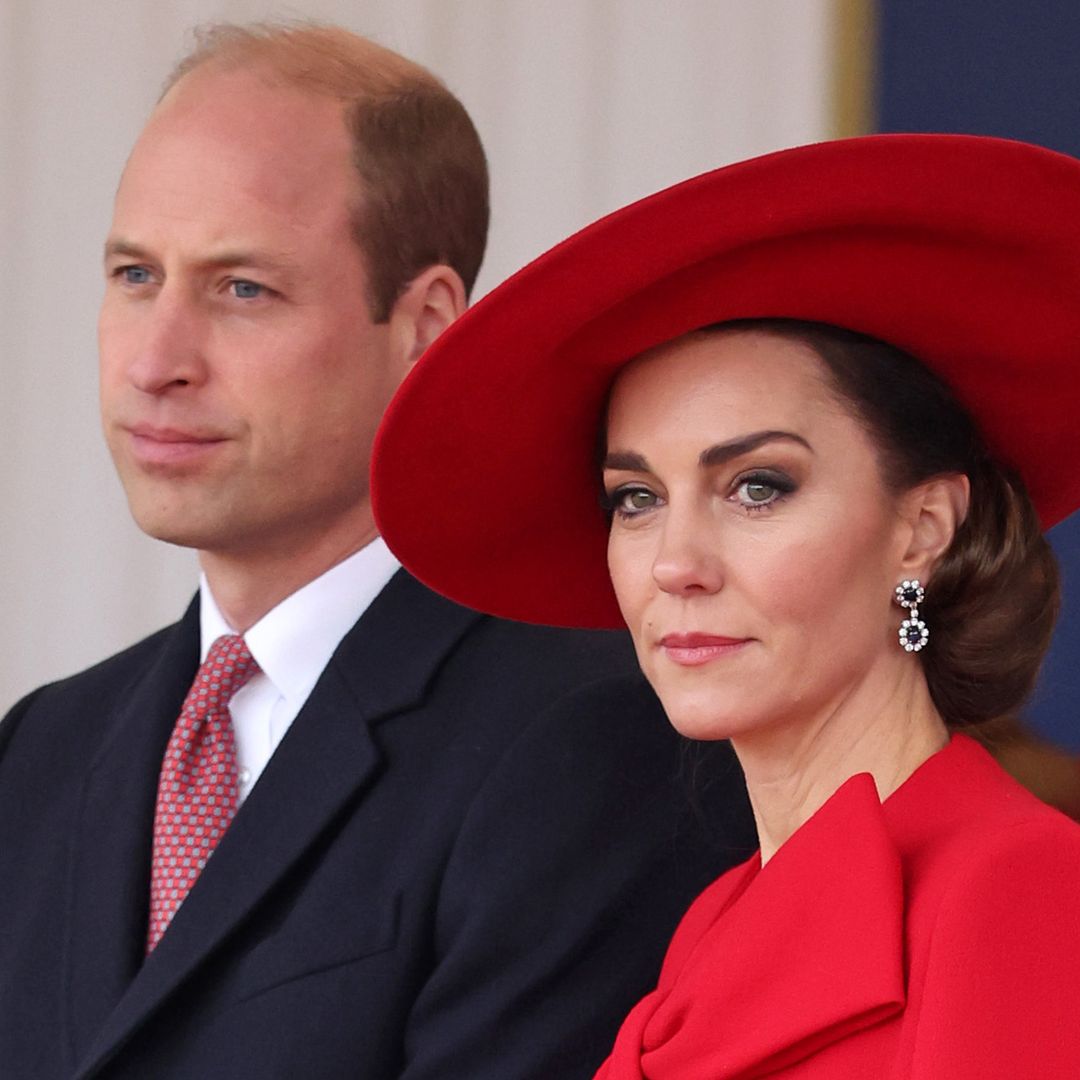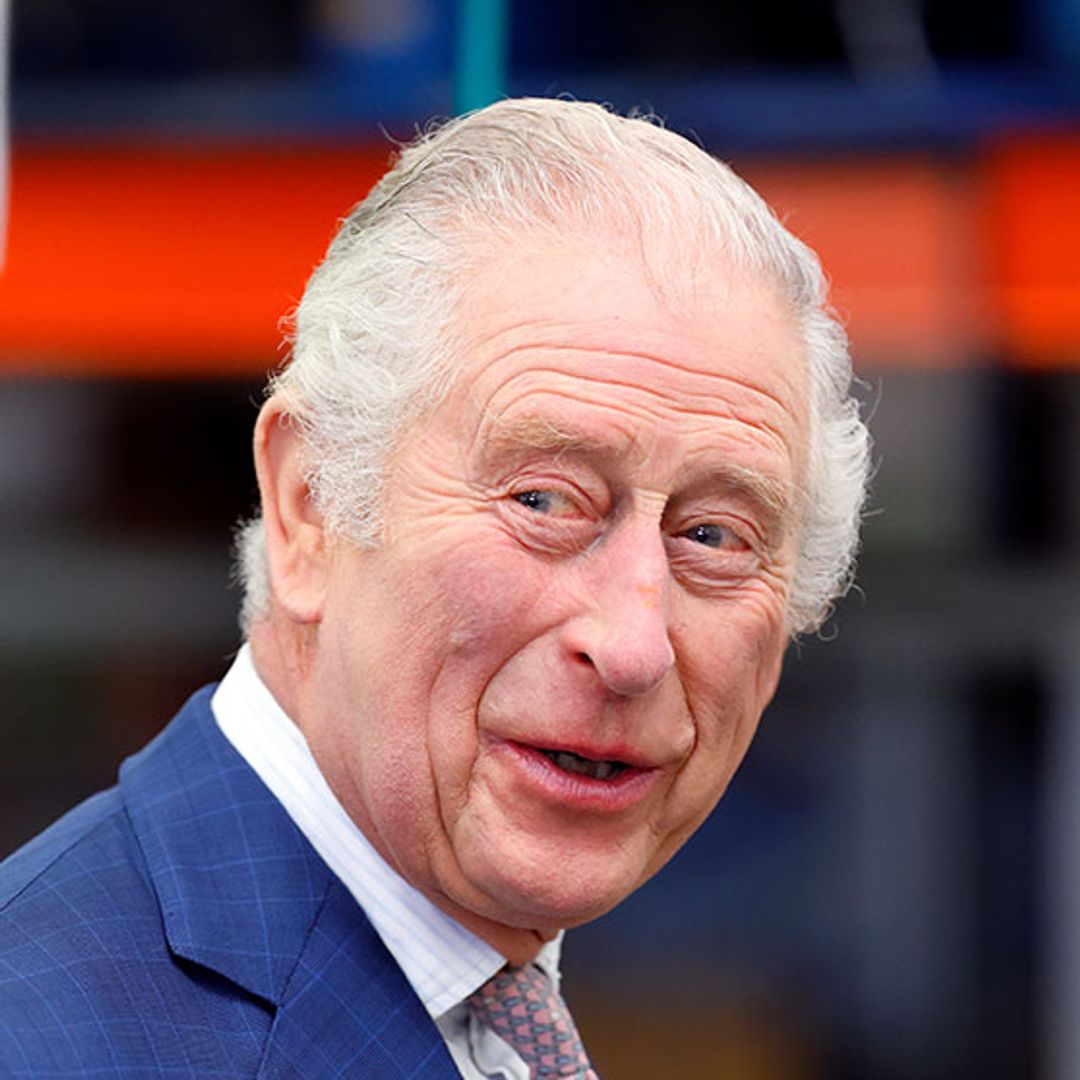The Duke of Cambridge has taken his campaign to stop poachers to a higher level – posing for pictures at the top of a 220ft crane. Prince William, 33, joked with photographers as they asked him to step closer to the edge. He said: "It's an awfully long way down. Would you like me to jump as well?!"
When they replied, laughing: "Not without a parachute," he said: "Well, maybe a bungee rope."
William went up in a crane used for unloading ships' cargo to highlight how illegal wildlife products such as ivory are easily smuggled via the shipping industry. He heard how one recent consignment of crates of tea from Kenya contained hundreds of hidden elephant tusks.
Prince William went up in a crane to bring awareness to his anti-poaching campaign
Despite protesting he was not scared at heights, he seemed nervous as he stepped onto a narrow gantry 60metres above London Gateway in Essex – one of the UK's biggest ports. Pulling a face, he said: "I'm sure this is all fine."
Looking down on thousands of containers, he said: "You can see the scale of the problem from here, it's amazing."
William's visit came hours before he unveiled a major agreement for action to crack down on global wildlife trafficking routes.
Prince William joined Lord Hague at the top of a 220ft crane
A year ago his United for Wildlife organisation set up a 15-member taskforce led by Lord Hague, which has agreed an 11-point treaty – the Buckingham Palace Declaration – to fight against trafficking. It was signed on Tuesday at Buckingham Palace by around 40 international transport and customs agencies and corporations, now committed to greater global co-operation in investigating and reporting suspected trafficking.
A spokeswoman for the Royal Foundation, which set up United for Wildlife, said: "It's always been the Duke's view that we should start with the transport sector. We have all this illegality and criminality in Asia and Africa but everything is moved around by legitimate transport routes.
"The Duke feels that people have a growing awareness not to buy things like ivory or rhino horn, but the transport is the link in the middle that he wants to shine a light on. Every year 30,000 elephants are killed – that's 60,000 tusks – and the human cost is huge too. Rangers are killed, tourism is affected if all the big game are killed and people's livelihoods depend on this cultural heritage.
The Duke talked to staff during his visit to London Gateway
"Tanzania has lost 60 per cent of its elephants, yet tourism is responsible for 13 per cent of its GDP. It's very much a human crisis too."
Sue Lieberman, vice president of Wildlife Conservation Society, said: "The two main transport routes for wildlife parts are by sea and by air. Rhino horn is easy to transport by air but ivory is much easier to be hidden at sea.
"Last year a huge amount of ivory was found hidden in tea exported from Kenya as the government had decided not to tax it, so no-one checked. The taskforce has been set up to figure out what can be done about this problem.
"There are existing national and international laws but nobody's been doing enough. If they had, we wouldn't have this problem. Industry needs to work with governments to try and stamp out the weak links.
"The idea of the taskforce is to create the links and the relationships to create better communication. If we fail, Africa will be bled of all its elephants."
